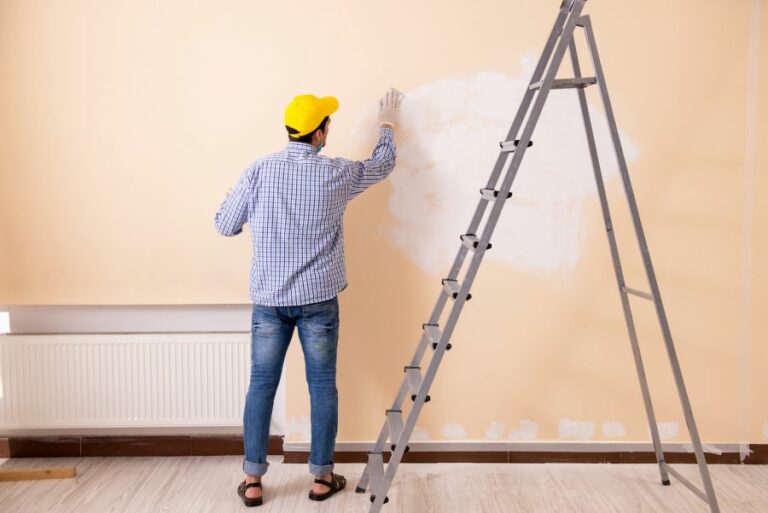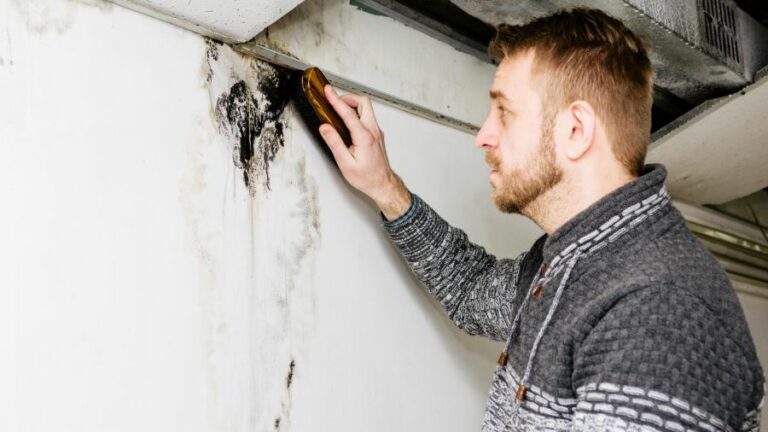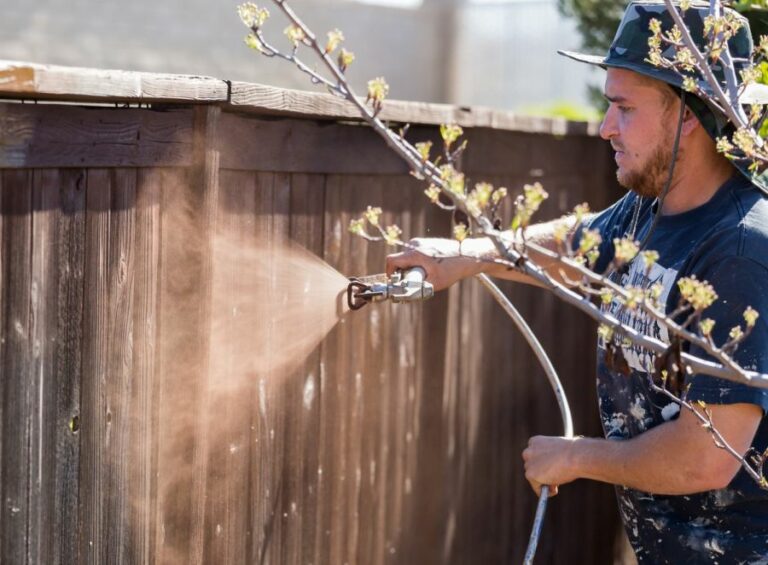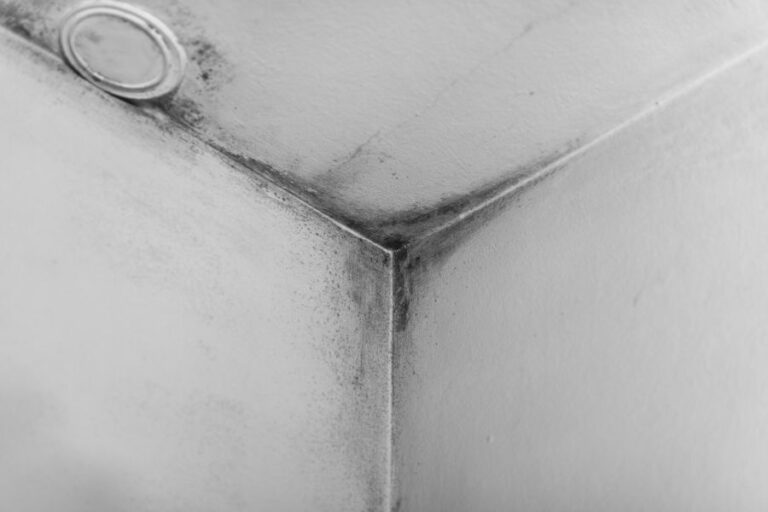Paint Removal Techniques And Surface Prep
Are you struggling with removing old paint from surfaces or unsure about proper surface preparation before a repaint? Worry no more, as we have got you covered. Over the years, we have mastered the art of paint removal techniques and surface prep to make any painting job seamless and easy for you.
Paint removal techniques and surface prep:
Paint removal techniques include chemical removers (solvent-based, caustic-based, and bio-based), mechanical methods (sanding, scraping, and heat guns), and adhering to safety precautions. Surface preparation involves cleaning, patching and repair, and priming to ensure proper paint adhesion, a uniform finish, and a long-lasting result.

Discover the best paint removal techniques and enhance your surface preparation skills with our comprehensive guide. Learn about eco-friendly options, time-tested methods, and all necessary safety precautions. Read on to achieve a flawless finish and transform your painting projects!
Contents
- 1 Techniques for Paint Stripping and Surface Preparation
- 2 Top Two Methods for Eliminating Paint Explained
- 3 The Preferred Method of Removing Paint: An Expert’s Guide
- 4 Quickest Solutions for Paint Stripping: A Guide
- 4.1 • Introduction: The Need for Speed in Paint Removal
- 4.2 • Chemical Paint Strippers: Fast-Acting Solutions for a Wide Range of Surfaces
- 4.3 • Heat Guns: A Versatile Tool for Quick Paint Stripping on Wood and Metal
- 4.4 • Pressure Washing: A Rapid Solution for Removing Paint from Exterior Surfaces
- 4.5 • Conclusion: Choose the Right Method and Product for Your Specific Paint Removal Needs
Techniques for Paint Stripping and Surface Preparation
Proper paint removal and surface preparation are essential in ensuring a successful and long-lasting paint job.
• Chemical Paint Removers
Using chemical paint removers is an effective way to remove old paint. There are different types of chemical paint removers, such as solvent-based, caustic-based, and bio-based. Each has its own advantages and specific application depending on the surface and type of paint being removed.
– Solvent-Based Removers
These removers contain chemicals that dissolve paint, such as methylene chloride or NMP. They are fast-acting, making them suitable for removing multiple layers of paint quickly.
However, they can be hazardous to your health and the environment. Ventilation and proper protective equipment, such as gloves and masks, are crucial when using solvent-based paint removers.
– Caustic-Based Removers
Compared to solvent-based removers, caustic-based removers are less harmful but also less effective. They contain chemicals like sodium hydroxide that break down paint but may take longer to work. Protective gear such as gloves, goggles, and a mask must still be worn when using this type of remover.
– Bio-Based Removers
For an eco-friendly option, consider using bio-based paint removers made from natural ingredients, such as soy or citrus-based products. They are effective while being less hazardous. However, they can take longer to work compared to other chemical removers.
• Mechanical Paint Removal
For those who prefer avoiding chemicals, mechanical paint removal is an alternative method. Common techniques include sanding, scraping, and using heat guns.
– Sanding
Sanding is a popular method for removing small areas of paint or smoothing rough surfaces. Use sandpaper or a power sander for large surfaces. Start with coarse-grit sandpaper and progress to finer grits as the paint is removed. Always sand in the direction of the wood grain to avoid scratching the surface.
– Scraping
For removing loose or peeling paint, a scraper is an effective tool. There are various scraper types, such as putty knives and paint scrapers with replaceable blades. Be cautious not to damage the surface when scraping off paint.
– Heat Guns
Heat guns use high temperatures to soften paint, making it easier to scrape off. Hold the heat gun a few inches away from the surface and move it in a slow, continuous motion.
Scrape the softened paint with a scraper or putty knife. Be careful not to overheat the surface or hold the heat gun too close, as this can cause damage or fire.
• Safety Precautions
Paint removal can be hazardous, so it’s important to take proper safety precautions.
- Wear protective gear, including gloves, goggles, masks, and long sleeves.
- Proper ventilation is necessary when using chemical paint removers, sanders, or heat guns.
- Dispose of paint and paint remover waste according to local regulations.
- Be cautious of lead-based paint, which may be present in homes built before 1978. Follow EPA guidelines for safe lead paint removal.
• Surface Preparation
After removing the old paint, surface preparation is essential for achieving a smooth, lasting finish.
– Cleaning
Clean the surface with a mild soap or detergent and water solution. Use a sponge or cloth to scrub away dirt, grease, and loose paint particles. Rinse with clean water and let the surface dry thoroughly.
– Patching and Repair
Inspect the surface for holes, cracks, or other imperfections. Fill any irregularities with a suitable filler or putty, following the manufacturer’s instructions. Once the filler has dried, sand it smooth.
– Priming
Applying a primer is critical for ensuring proper paint adhesion and a uniform finish. Choose a primer appropriate for the surface and paint being used. Follow the manufacturer’s instructions for application and drying times.
In conclusion, thorough paint removal and surface preparation are crucial for a successful paint job. By following the tips outlined in this article and adhering to safety precautions, you can achieve a professional-looking and long-lasting result.
Top Two Methods for Eliminating Paint Explained
Paint removal is an essential process when restoring furniture, vehicles, or buildings with old, damaged, or chipping paint. Paint stripping can be achieved through various methods, but the two most common methods are chemical paint removers and mechanical paint stripping.
• Chemical Paint Removers
Also known as paint strippers, chemical paint removers dissolve paint, allowing for its easy removal from surfaces. They come in various forms, such as liquid, gel, or paste.
Among these, many professionals prefer using gel and paste formulations as they tend to cling better to vertical surfaces, providing a better-working result.
– Types of Chemical Paint Removers
There are two main types of chemical paint removers: solvent-based and caustic-based.
- Solvent-based Paint Removers: These removers typically contain solvents like methylene chloride, acetone, or toluene, which effectively break down paint layers. They are highly effective but can be harmful to both humans and the environment. It is essential to use protective gear, like gloves and goggles, when handling these chemicals and work in a well-ventilated area.
- Caustic-based Paint Removers: With sodium hydroxide as their active ingredient, caustic-based paint removers are alkaline and can effectively remove paint. However, they may also cause surfaces to darken or leave behind a residue that requires neutralizing with a solution like vinegar. They can also damage some substrates like wood and aluminum, so it’s vital to test a small area before applying them on a larger scale.
– Benefits of Chemical Paint Removers
- Effective for removing multiple paint layers.
- Can be used on various surfaces like wood, metal, concrete, and masonry.
- Less labor-intensive compared to mechanical methods.
– Drawbacks of Chemical Paint Removers
- Potentially hazardous to humans and the environment.
- Stripping process can be time-consuming.
- Can damage some surfaces or leave residues.
• Mechanical Paint Stripping
This category entails physically removing paint from surfaces using various techniques like sanding, scraping, or blasting. Mechanical paint stripping methods are often preferred when dealing with lead paint or when a chemical paint remover isn’t suitable for the job.
– Common Mechanical Paint Stripping Techniques
- Sanding: The most straightforward mechanical paint stripping method, sanding, involves using sandpaper or a power sander to remove paint. For most applications, it is recommended to start with coarse-grit sandpaper and gradually move on to finer grits for a smoother finish. When dealing with lead paint, it is vital to use a HEPA vacuum-equipped sander to minimize dust exposure.
- Scraping: Using a scraper or putty knife, paint can be manually removed from surfaces. This method is suitable for small areas or when dealing with paint that is already peeling or cracking. However, it can be labor-intensive and might damage some surfaces if not carried out carefully.
- Blasting: Media blasting, like sandblasting, soda blasting, or dry ice blasting, is the most aggressive mechanical paint stripping technique. It involves propelling abrasive materials at high velocities to remove paint from surfaces. This method is highly effective for large, flat surfaces like vehicles, boats, or industrial equipment but not recommended for delicate surfaces like wood or ornate architectural elements.
– Benefits of Mechanical Paint Stripping
- Can be used in situations where chemical paint removers aren’t suitable.
- Creates less chemical waste and environmental concerns.
- Effective for large surfaces and heavy-duty paint removal jobs.
– Drawbacks of Mechanical Paint Stripping
- Labor-intensive and can be time-consuming.
- Potential damage to surfaces if not done carefully.
- Exposure to dust and debris, especially when dealing with lead paint.
• Choosing the Right Paint Removal Method
When deciding on a paint removal technique, consider factors like surface material, the type and amount of paint to be removed, and any environmental or health concerns. Chemical paint removers are an excellent option for most applications, as long as proper safety precautions are followed.
Mechanical paint stripping is more labor-intensive but provides a viable alternative when chemical removers aren’t suitable or pose environmental risks.
For further information, refer to the EPA website for guidelines on dealing with lead paint and choosing appropriate paint removal techniques.
The Preferred Method of Removing Paint: An Expert’s Guide
As an experienced professional in the field of paint removal, one common question I encounter is: what is the preferred method of removing paint? The answer, however, isn’t a simple one. Paint removal methods vary depending on the type of surface, the type of paint, and the desired end result.
• Types of Surfaces
– Wood
When dealing with wooden surfaces, care must be taken to preserve the natural grain and texture. Common methods of paint removal from wood include sanding, scraping, and using heat or chemicals.
Sanding is ideal for flat surfaces, but may cause damage to detailed woodwork, while scraping and heating require extreme caution. Chemical strippers are more gentle and suitable for intricate details, but may also raise the grain if not properly neutralized.
– Metal
Paint removal from metal surfaces can be achieved through sandblasting, chemical stripping, or using grinding and sanding tools. Sandblasting is effective for large areas but requires specialized equipment and may not be recommended for soft metals such as aluminum.
Chemical stripping can be time-consuming and potentially dangerous to handle. Grinding and sanding tools are effective for smaller areas but may damage the metal surface if not used carefully.
– Concrete and Masonry
Removing paint from concrete and masonry surfaces can be challenging due to their porous nature. Power washing, sandblasting, and chemical stripping are possible options, with power washing being the most environmentally friendly.
However, it may not be effective in removing deep-rooted paint, while sandblasting may damage the substrate. Chemical stripping can be effective, but may also inhibit the adhesion of new paint if not properly neutralized.
• Types of Paint
– Oil-based Paint
Oil-based paint is often tougher to remove compared to other types of paint. In general, chemical strippers are effective in breaking down the bond between the paint and the surface. However, proper safety precautions and disposal methods should be followed when using such chemicals.
– Water-based Paint (Latex)
Water-based or latex paint is easier to remove than oil-based paint. Wet paint can typically be wiped away with a damp cloth, while dried paint can be taken off using various techniques such as sanding, scraping, or chemical stripping depending on the surface.
– Industrial Coatings
Industrial coatings, like epoxies and polyurethanes, can be difficult to remove due to their strong adhesion to surfaces. Mechanical methods such as sandblasting, grinding, or needle scaling can be effective at removal, but may require specialized equipment and skilled operators.
Chemical strippers can also be used, but their effectiveness depends on the specific coating being removed.
• Paint Removal Safety Tips
Regardless of the paint removal method chosen, proper safety procedures must be followed to protect oneself and the environment. These include:
- Using proper personal protective equipment (PPE) such as gloves, goggles, and respirators
- Ensuring adequate ventilation when using chemical strippers
- Properly disposing of waste materials, including chemicals and debris
• My Recommendations
Based on my years of experience in the paint removal industry, I recommend the following methods for each type of surface:
- Wood: Chemical stripping is often the most gentle and effective method, especially for detailed or intricate woodwork. However, sanding, scraping, or using heat guns can be suitable for flat areas with caution.
- Metal: Sandblasting or using grinding/sanding tools provide effective solutions, as long as care is taken not to damage the surface. Chemical stripping can also be considered for smaller areas.
- Concrete and Masonry: Power washing is the most environmentally friendly method, but may require additional cleanup. Sandblasting can be effective, but care must be taken not to damage the substrate. Chemical stripping can be considered, but proper neutralization is essential for successful paint adhesion.
For additional information on paint removal techniques and thorough guidelines, I recommend referring to the United States Environmental Protection Agency (EPA) Lead Paint Abatement Guidelines for safe work practices and procedures.
Quickest Solutions for Paint Stripping: A Guide
• Introduction: The Need for Speed in Paint Removal
Paint removal is an essential step in any restoration, renovation, or redecoration project. Whether you want to strip old paint from a piece of furniture, remove graffiti from a wall, or prepare a surface for a fresh coat of paint, you need a fast and effective method to get the job done.
• Chemical Paint Strippers: Fast-Acting Solutions for a Wide Range of Surfaces
Among the fastest methods to remove paint, chemical paint strippers hold a prominent place. These products use a combination of chemicals to break down the paint, weakening its bond with the surface, and allowing for easy removal.
Various types of chemical paint strippers are available in the market, and choosing the right one depends on factors such as the type of paint (water-based, oil-based, or lacquer), the surface material (wood, metal, or masonry), and environmental considerations.
– Caustic Paint Strippers: A Powerful Option for Oil-Based Paints
Caustic paint strippers are highly effective in removing oil-based paints and are among the fastest-acting options. They contain alkaline chemicals, such as sodium hydroxide or potassium hydroxide, which penetrate the paint and cause it to swell, lose adhesion, and become easy to scrape off.
However, caustic paint strippers can darken wood and corrode certain metals, so they may not be suitable for all surfaces. They also produce fumes and can cause skin irritation, requiring proper ventilation and protective gear during use.
– Bio-Based Paint Strippers: A Greener Choice for Environmentally Conscious Users
Bio-based paint strippers offer a more environmentally friendly alternative to traditional chemical strippers, using naturally occurring solvents derived from plants and other renewable sources.
They are typically more gentle on surfaces and users’ health, producing fewer fumes and causing less skin irritation. While not as fast-acting as caustic paint strippers, some bio-based products can remove paint within a few hours, depending on the thickness and type of paint.
• Heat Guns: A Versatile Tool for Quick Paint Stripping on Wood and Metal
Heat guns are among the go-to tools for many professional painters and DIY enthusiasts looking for a speedy way to remove paint from wood and metal surfaces.
By emitting hot air at temperatures between 750 and 1000 degrees Fahrenheit, heat guns soften the paint, making it easy to scrape off with a putty knife or specialized scraper. This method works best for oil-based and thickly applied paints, although multiple passes may be needed for stubborn layers.
When using a heat gun, always practice caution to avoid fires, burns, or damage to the surface underneath the paint. Start at the lowest temperature and increase gradually, moving the heat gun in sweeping motions to evenly heat the area.
It’s also essential to work in a well-ventilated space, as the process can release toxic fumes, especially when dealing with lead-based paints.
• Pressure Washing: A Rapid Solution for Removing Paint from Exterior Surfaces
For outdoor projects like decks, fences, and exterior walls, pressure washing is an excellent option for fast paint removal. By directing a high-pressure water stream onto the painted surface, pressure washers can quickly blast away layers of paint, dirt, and debris.
It’s worth noting that this method is most effective for removing flaking or peeling paint and may not be suitable if the paint is still well-adhered.
When choosing a pressure washer for paint removal, consider the power of the machine, measured in pounds per square inch (PSI). Higher PSI levels will speed up the paint stripping process, but they also increase the risk of damaging the surface, particularly on wood and masonry.
Therefore, it’s crucial to select the appropriate PSI and nozzle for the task and to keep a safe distance from the surface while working.
• Conclusion: Choose the Right Method and Product for Your Specific Paint Removal Needs
In summary, the fastest methods for paint removal include chemical paint strippers, heat guns, and pressure washing, each offering advantages and disadvantages depending on the situation.
To achieve the best results in the shortest time, always choose the most suitable technique and product for your specific project, taking into account factors like the type of paint, the material of the surface, and safety concerns.
And always remember to follow the manufacturer’s instructions and safety precautions, as well as wearing the necessary protective gear, to ensure a successful and secure paint removal experience.







